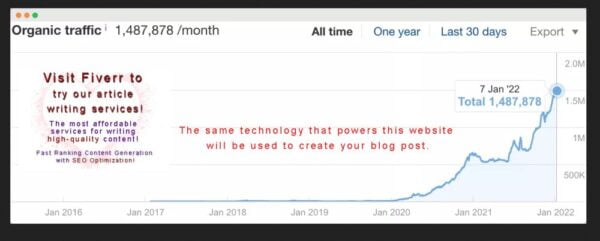Mastering the Art of Writing SEO Content
Writing SEO content is a skill that marries the creative with the technical. It’s about crafting articles, blog posts, and web pages that not only captivate readers but also satisfy the algorithms that power search engines like Google. In this comprehensive guide, we’ll explore the ins and outs of content writing in SEO, providing you with actionable tips and insights to enhance your online presence.

Understanding SEO Content Writing
![]()
Before diving into the mechanics of writing content for SEO, it’s crucial to understand what SEO content writing entails. SEO, or Search Engine Optimization, is the process of optimizing your content to rank higher in search engine results pages (SERPs). This means when someone types a query related to your content, your page has a better chance of appearing at the top of the results, leading to more visibility and traffic.
The Pillars of SEO Content Writing
![]()
SEO content writing is built on several key pillars that ensure your content is both reader-friendly and search engine-friendly. These include keyword research, content quality, user engagement, and technical optimization.
- Keyword Research: Identifying the right keywords is the foundation of SEO content writing. These are the terms and phrases that users type into search engines when looking for information.
- Content Quality: Search engines favor content that provides value to the reader. High-quality, informative, and engaging content is more likely to rank well.
- User Engagement: The more users interact with your content, the better. Metrics like time on page, bounce rate, and click-through rate are indicators of engagement.
- Technical Optimization: This involves ensuring your website’s technical elements, such as site speed, mobile-friendliness, and structured data, are optimized for search engines.
Keyword Research: The Starting Point of SEO Content Writing
![]()
Keyword research is the first step in writing SEO content. It involves identifying the terms and phrases that your target audience is searching for. These keywords should be relevant to your content and business. Tools like Google Keyword Planner, SEMrush, and Ahrefs can help you find keywords with a good balance of search volume and competition.
Crafting Quality Content for SEO
![]()
Once you have your keywords, it’s time to start writing. But not just any writing—your content must be engaging, informative, and valuable to your readers. Here are some tips for creating quality SEO content:
- Write for Your Audience: Understand who your readers are and what they’re looking for. Tailor your content to meet their needs and answer their questions.
- Be Informative: Provide comprehensive information on the topic you’re covering. Use examples, case studies, and statistics to support your points.
- Keep It Engaging: Use a conversational tone, tell stories, and ask questions to keep readers interested.
- Structure Your Content: Use headings, subheadings, bullet points, and short paragraphs to make your content easy to read and navigate.
Engaging Your Audience with SEO Content
![]()
User engagement is a critical factor in SEO. Search engines take note when users spend more time on your page, share your content, or return for more. To boost engagement, consider the following:
- Interactive Elements: Include images, videos, infographics, and other multimedia elements to enrich the user experience.
- Call to Action: Encourage readers to comment, share, or subscribe to your content. This not only increases engagement but also builds a community around your brand.
- Update Regularly: Keep your content fresh by updating it with the latest information and trends. This encourages repeat visits and signals to search engines that your site is active.
Technical Aspects of SEO Content Writing
![]()
While the quality of your content is paramount, technical SEO cannot be overlooked. Here are some technical aspects to consider:
- Mobile-Friendliness: Ensure your website is responsive and looks good on all devices, as mobile usability is a ranking factor.
- Page Speed: Optimize images, minify code, and leverage browser caching to improve your site’s loading times.
- Meta Tags: Use title tags and meta descriptions to provide clear information about your content. These tags appear in search results and can influence click-through rates.
- URL Structure: Create clean, descriptive URLs that include your target keywords for better indexing.
SEO Content Writing Service: When to Seek Professional Help
![]()
If writing SEO content seems overwhelming, or if you simply don’t have the time to dedicate to it, an SEO content writing service can be a valuable asset. These services specialize in creating content that’s optimized for both search engines and readers. They can help with keyword research, content creation, and even technical SEO aspects.
SEO Blog Writing: A Case Study
![]()
Let’s look at a case study to illustrate the impact of effective SEO blog writing. A small business blog started focusing on SEO content writing, targeting specific keywords related to their industry. They published regular, high-quality posts that provided value to their readers. Over six months, they saw a 150% increase in organic traffic and a significant boost in their SERP rankings. This success was due to a combination of keyword research, engaging content, and technical optimization.
Conclusion: The Power of Writing SEO Content
![]()
Writing content for SEO is a powerful strategy for increasing your online visibility and attracting more traffic to your website. By focusing on keyword research, crafting quality content, engaging your audience, and optimizing technical aspects, you can create content that resonates with both readers and search engines. Whether you choose to write your own SEO content or enlist the help of an SEO content writing service, the principles outlined in this guide will help you succeed in the ever-evolving world of search engine optimization.
Remember, SEO is a long-term strategy. It takes time, effort, and patience to see results. But with consistent effort and a focus on quality, your SEO blog writing and content creation efforts will pay off, driving more traffic and customers to your business.


